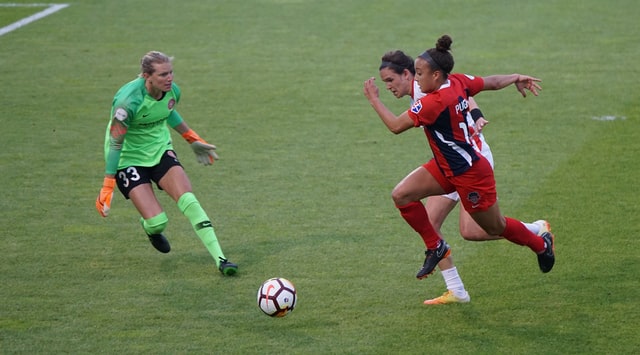For most people, women’s football and men’s football are two separate things. Even for the biggest of fans, it can be hard to imagine how some of this sport’s biggest players would compare in different aspects against the female football players. Football is a game that is played on many levels ranging from the weekend game in the local park to world cups! This is seen more often as a male dominated sport but it’s no secret that women’s football has been growing massively in popularity over the last few years. More and more girls and women are turning to football as their chosen sport, and this can only be a good thing. But, with the increased interest comes many questions: is it the same sport? Is it harder to play than “men’s” football? Are there any differences bearing in mind that men are typically bigger, stronger and faster than women?
Speed and strength
Male football players are often faster than their female counterparts. This is because they are usually taller and heavier, which gives them an advantage in terms of power. They also tend to be better at shooting (which requires more strength) while women are better at passing (which requires more dexterity).

Fewer injuries
One of the differences between male and female football is that there are fewer injuries in women’s football. The reason for this can be attributed to several factors, including the fact that women are generally smaller than men and less likely to engage in physical contact during matches. Moreover, during a more agressive contact with another player, women’s bodies have less impact when they collide with other players or with the ground during a fall.. In addition, there is less pressure on women’s teams to perform well because they have not been historically expected to compete as well as men’s teams.
Let’s dive into some numbers
First, let’s look at how much money each sport brings in: according to Forbes, men’s soccer generates about $17 billion per year while women’s soccer generates $1 billion (and that number doesn’t include all countries). The difference here can be explained by the amount of people who watch men’s games versus women’s games.

Second, let’s look at how many people play each sport: according to FIFA, there are 29 million active players for men’s soccer worldwide and 5 million active players for women’s soccer worldwide. This can also be explained by viewership numbers.
Thirdly, let’s look at how many countries have teams competing around the world: there are 209 countries involved with men’s soccer compared with just 67 countries involved with women’s soccer (according to WorldFootballFederation). This can be partially explained by global populations but also by interest levels within each group.

